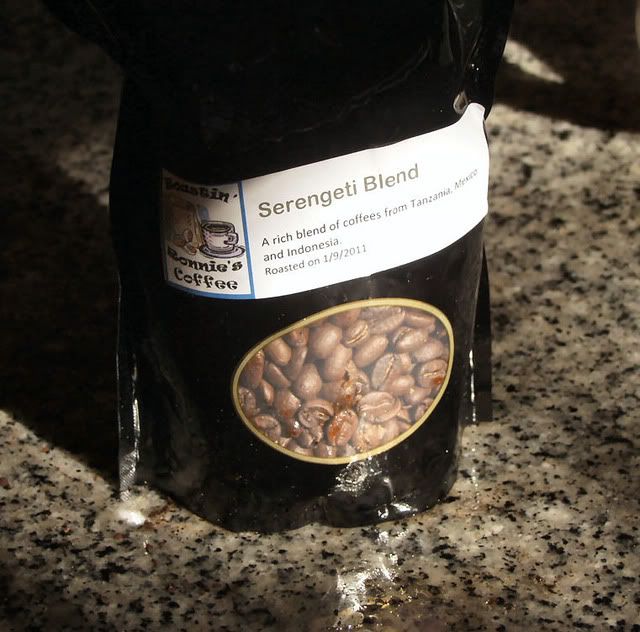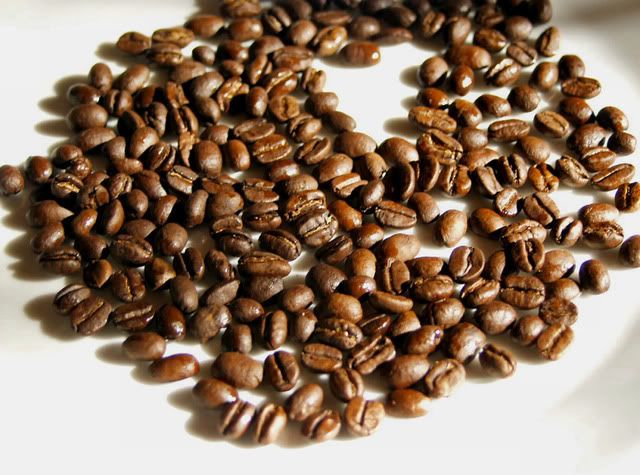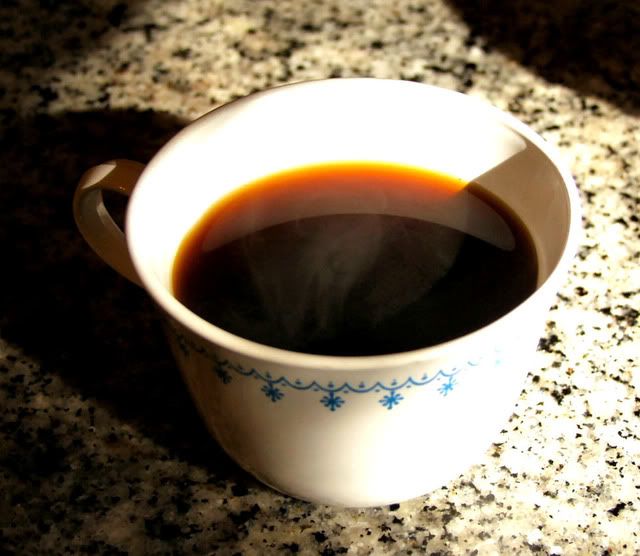A fellow BBQ aficionado has expanded his hobby of roasting his own coffee, as well as his passion for coffee, into a small fledgling business. He has started selling his coffee on the BBQ Brethren forums under the name Roastin' Ronnies Coffee. I decided to buy a pound of his Serengeti Blend beans to just see what a home roaster can do. I normally get my beans from a place called Zocalo Coffee in San Leandro, who have a philosophy that each bean has an optimal roast and that it is never going to be burned to a crisp. So I was curious to see how Ron interpreted his ideals of roasting beans to a level that the bean is optimized. Upon opening the bag, I was hit with a very aromatic nose and no aroma of being in the bag. These were not sitting in the bag for very long. Here is Ron's bag as mailed.
Guess who misjudged the levels of light in his kitchen, yes, me! That image lighting is far more dramatic than a bag of coffee probably needs. As you can see, the Serengeti Blend is a blend of Tanzania, Mexico and Indonesian beans, there were some that were peaberry sized and others more along the line of your typical Arabica sized bean. The overall roast is a little darker than in the photos, again, the lighting levels were not as good as I thought. Here are the beans on a white plate, to show size and color at least somewhat close to the real color.
Hopefully you can see the sheen and variety of bean sizes. The beans were clean and did not have chaff or ash, there were very few cracked beans and the color and aroma was clean with no bitter, acrid or off smells. There was zero baggy aromas at all. I mention this as Tanzania beans can often suffer from quality control and show baggy tones in the nose. I am more of a fan of Indonesian coffees and have not been a fan of Kenyan coffees, as they are very clean and mild. I do not believe I have ever had a light roasted Mexican coffee as a single source roast, so I have no ability to tease out what they contributed. I decided to do a pour over test for my first taste. I would extract light to get the most bright flavors, I was hoping to bring up the similarities that the Tanzanian coffee might have to Kenyan coffees. Here is the cup...
This is with water heated to 195F and pour over timing of 2.5 minutes with a standard pour over coffee process. The coffee was tasted at 120F initially and later at 90F. I do not like to taste hot coffee. As you can see, there is a little red to the brew, the color deepened into the cup, the bottom of the cup was not visible. The aroma was a little fruity with a good earthy note. I am not great at teasing out flavor descriptors, but, the cup was very clean, mild with light acidity, I got no floral and limited tree fruit flavors, no wine or berry flavors at all. I did get a distinct sense that this was a very clean version of a North African/Indonesian coffee. Which means I liked it a lot. Not at all the Kenyan I was expecting. I think this might actually make an interesting espresso, which is my plan for tomorrow.




No comments:
Post a Comment